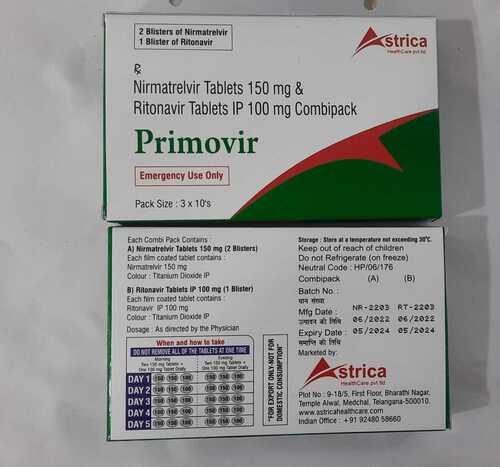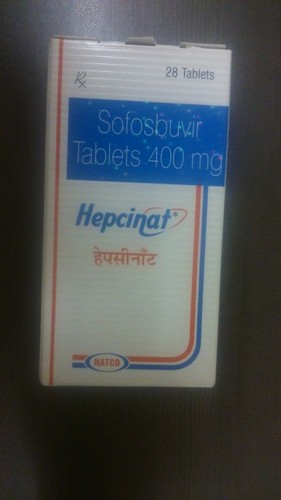


Retroviral Drugs
Price 6000 INR/ Box
Retroviral Drugs Specification
- Drug Type
- General Medicines
- Physical Form
- Tablets
- Recommended For
- Adults
- Dosage Guidelines
- As directed by a physician
- Suitable For
- Adults
- Storage Instructions
- Keep in a Cool & Dry Place
Retroviral Drugs Trade Information
- Minimum Order Quantity
- 100 Boxes
- Supply Ability
- 10000000 Boxes Per Week
- Delivery Time
- 1 Week
- Main Domestic Market
- All India
About Retroviral Drugs
Retroviral drugs are medications used to treat infections caused by retroviruses, primarily human immunodeficiency virus (HIV). HIV is a retrovirus that attacks the immune system, specifically targeting CD4 cells, a type of white blood cell crucial for the body's defense against infections.
Left untreated, HIV can lead to acquired immunodeficiency syndrome (AIDS), a condition where the immune system is severely compromised, making individuals susceptible to various infections and diseases.
Retroviral drugs are medications used to treat infections caused by retroviruses, primarily human immunodeficiency virus (HIV). HIV is a retrovirus that attacks the immune system, specifically targeting CD4 cells, a type of white blood cell crucial for the body's defense against infections.
Left untreated, HIV can lead to acquired immunodeficiency syndrome (AIDS), a condition where the immune system is severely compromised, making individuals susceptible to various infections and diseases.
Mechanism of Action
Retroviral drugs work by targeting different stages of the HIV life cycle, inhibiting the virus from replicating and reducing its viral load in the body.
These drugs fall into several classes, including:
Retroviral drugs work by targeting different stages of the HIV life cycle, inhibiting the virus from replicating and reducing its viral load in the body.
These drugs fall into several classes, including:
Nucleoside Reverse Transcriptase Inhibitors (NRTIs)
These drugs interfere with the action of reverse transcriptase, an enzyme that HIV uses to convert its RNA into DNA.
Examples include:
- Zidovudine (AZT)
- Lamivudine (3TC)
- Tenofovir (TDF)
These drugs interfere with the action of reverse transcriptase, an enzyme that HIV uses to convert its RNA into DNA.
Examples include:
- Zidovudine (AZT)
- Lamivudine (3TC)
- Tenofovir (TDF)
Non-Nucleoside Reverse Transcriptase Inhibitors (NNRTIs)
NNRTIs bind to a different site on the reverse transcriptase enzyme, blocking its activity and preventing HIV from replicating.
Examples include:
- Efavirenz
- Nevirapine
- Etravirine
NNRTIs bind to a different site on the reverse transcriptase enzyme, blocking its activity and preventing HIV from replicating.
Examples include:
- Efavirenz
- Nevirapine
- Etravirine
Protease Inhibitors (PIs)
Protease is another enzyme essential for HIV replication. Protease inhibitors block the activity of this enzyme, preventing the virus from maturing and producing infectious particles.
Examples include:
- Ritonavir
- Atazanavir
- Darunavir
Protease is another enzyme essential for HIV replication. Protease inhibitors block the activity of this enzyme, preventing the virus from maturing and producing infectious particles.
Examples include:
- Ritonavir
- Atazanavir
- Darunavir
Integrase Inhibitors
These drugs block the action of integrase, an enzyme that HIV uses to integrate its viral DNA into the DNA of the host cell. By inhibiting integrase, these drugs prevent the virus from establishing a permanent infection.
Examples include:
- Raltegravir
- Dolutegravir
- Bictegravir
These drugs block the action of integrase, an enzyme that HIV uses to integrate its viral DNA into the DNA of the host cell. By inhibiting integrase, these drugs prevent the virus from establishing a permanent infection.
Examples include:
- Raltegravir
- Dolutegravir
- Bictegravir
Entry Inhibitors
Entry inhibitors block HIV from entering CD4 cells. There are two types:
- Fusion Inhibitors: Prevent HIV from fusing with the cell membrane
- CCR5 Antagonists: Block the CCR5 co-receptor on the surface of CD4 cells, preventing HIV from entering
Examples include:
- Enfuvirtide (Fusion Inhibitor)
- Maraviroc (CCR5 Antagonist)
Entry inhibitors block HIV from entering CD4 cells. There are two types:
- Fusion Inhibitors: Prevent HIV from fusing with the cell membrane
- CCR5 Antagonists: Block the CCR5 co-receptor on the surface of CD4 cells, preventing HIV from entering
Examples include:
- Enfuvirtide (Fusion Inhibitor)
- Maraviroc (CCR5 Antagonist)
Pharmacokinetic Enhancers
Drugs like ritonavir and cobicistat are sometimes used in combination with other HIV medications to boost their levels in the bloodstream, allowing for reduced dosages and improved efficacy.
Drugs like ritonavir and cobicistat are sometimes used in combination with other HIV medications to boost their levels in the bloodstream, allowing for reduced dosages and improved efficacy.
HIV Treatment Approach
Treatment for HIV typically involves combining drugs from different classes into a regimen known as:
- Antiretroviral Therapy (ART)
- or Highly Active Antiretroviral Therapy (HAART)
This approach helps:
- Suppress viral replication
- Reduce the viral load to undetectable levels
- Preserve immune function
- Improve overall health outcomes for individuals living with HIV
Treatment for HIV typically involves combining drugs from different classes into a regimen known as:
- Antiretroviral Therapy (ART)
- or Highly Active Antiretroviral Therapy (HAART)
This approach helps:
- Suppress viral replication
- Reduce the viral load to undetectable levels
- Preserve immune function
- Improve overall health outcomes for individuals living with HIV
Adherence and Resistance
Its important for individuals with HIV to adhere to their treatment regimen consistently to:
- Maintain viral suppression
- Prevent the development of drug resistance
FAQs of Retroviral Drugs:
Its important for individuals with HIV to adhere to their treatment regimen consistently to:
- Maintain viral suppression
- Prevent the development of drug resistance
FAQs of Retroviral Drugs:
Q: What is the physical form of Retroviral Drugs?
A: Retroviral Drugs are available in tablet form.Q: Who are Retroviral Drugs suitable for?
A: Retroviral Drugs are suitable for adults.Q: What type of drug are Retroviral Drugs?
A: Retroviral Drugs fall under the category of general medicines.Q: How should Retroviral Drugs be stored?
A: Retroviral Drugs should be kept in a cool and dry place.Q: What are the dosage guidelines for Retroviral Drugs?
A: Retroviral Drugs should be taken as directed by a physician.

Price:
- 50
- 100
- 200
- 250
- 500
- 1000+
More Products in Virology Drugs Category
Hepcinat (Sofosbuvir 400mg) Tablets
Minimum Order Quantity : 10000000 Pieces
Function : AntiViral
Physical Form : Tablets
Storage Instructions : Dry Place
Pacakaging (Quantity Per Box) : 28 Tablets
Drug Type : Specific Drug
 |
DHEER HEALTHCARE PRIVATE LIMITED
All Rights Reserved.(Terms of Use) Developed and Managed by Infocom Network Private Limited. |
 English
English Spanish
Spanish French
French German
German Italian
Italian Chinese (Simplified)
Chinese (Simplified) Japanese
Japanese Korean
Korean Arabic
Arabic Portuguese
Portuguese
 Send Inquiry
Send Inquiry

